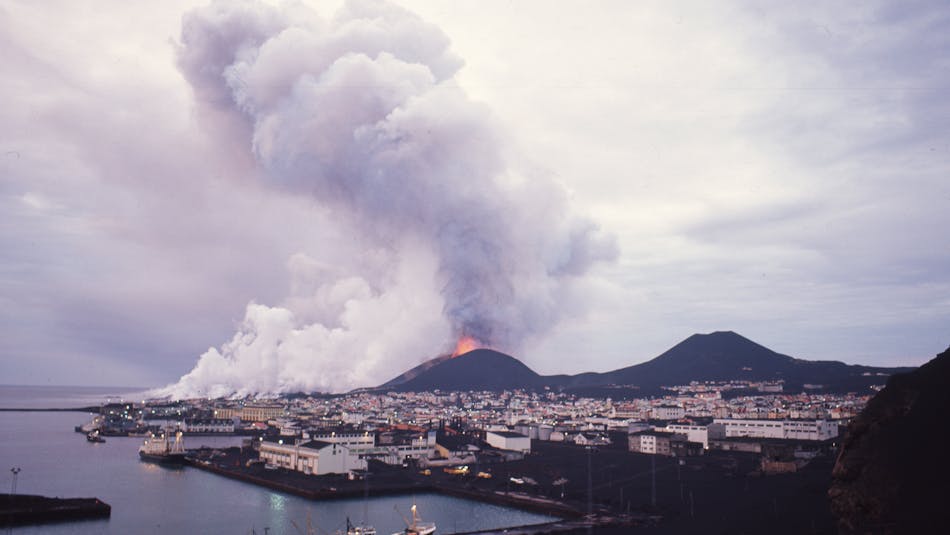
The Heimaey 1973 eruption unleashed an inferno as an erupting fissure opened at the edge of town during the middle of the night, rapidly engulfing houses in its path. Photo by Kristinn Benediktsson.

The Heimaey 1973 eruption unleashed an inferno as an erupting fissure opened at the edge of town during the middle of the night, rapidly engulfing houses in its path. Photo by Kristinn Benediktsson.